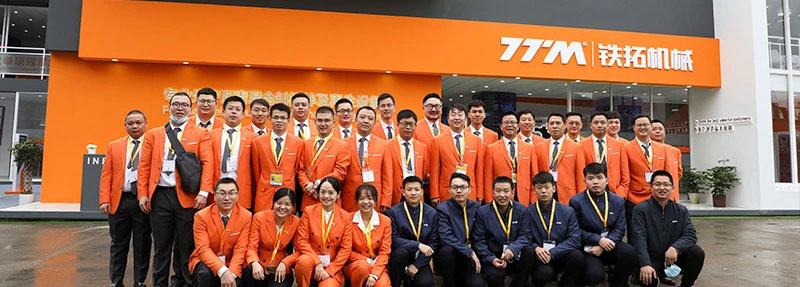Why Contractors Are Switching to a Portable Hot Mix Asphalt Plant—And You Might Too
Every spring, highway departments and private pavers face the same headache: haul costs keep climbing while job windows keep shrinking. Enter the portable hot mix asphalt plant, a tow-able, self-erecting unit that promises fresh mix within 20 minutes of arrival. Sounds bold, right? Yet state DOT data from Texas and Georgia show contractors trimming 18–24 % off material spend after the first season. The secret isn’t wizardry; it’s eliminating the 60-mile round-trip to the nearest static dryer. Fewer trucks on the road, less wasted diesel, and—here’s the kicker—no overnight “tender” mix that has to be reheated the next morning.
How Does the Technology Work on the Go?
Picture a 40-ft trailer with three folding bins: virgin aggregate, RAP, and baghouse dust. A variable-frequency feeder meters each stream into a triple-deck screen, then drops precisely weighed fractions into a 6-ft counter-flow drum. The burner ramps to 1,600 °F in under three minutes thanks to a high-pressure atomizer. While the drum rotates, a PLC tracks ambient humidity and auto-tunes the bitumen injection. The whole shebang is powered by a 350-kW genset that meets Tier-4 Final—so you can still bid on California jobs without a paperwork meltdown. In short, you get stationary-plant accuracy with the footprint of a carnival ride.
Wait, What About EPA Permits?
Ah, the million-dollar question. Most portable hot mix asphalt plant models ship with an EPA “General Air Quality Permit for Minor Sources” pre-packaged. Translation: if your production stays under 100,000 tons per year and you burn pipeline gas or ultra-low-sulfur diesel, you’re basically on a fast-track. Some counties still want a 30-day public notice, but that beats the 18-month saga required for a 400-tph stationary facility. Pro tip: keep a copy of the manufacturer’s emissions guarantee in the glove box; inspectors love seeing “≤0.04 lb PM-10 per ton” in bold Arial.
Crunching the Numbers: ROI in One Season
Let’s run quick math on a two-mile county road resurfacing project:
- Average haul (stationary plant): 42 miles → $11.30 per ton in trucking.
- Volume required: 18,000 tons.
- Extra burn-off for weekend delays: 3 %.
Total extra cost: ≈ $230,000. A mid-size portable hot mix asphalt plant rents for $35,000 per month, including calibration. Even if you keep it for three months, you’re still $125,000 in the black—before you count night-shift bonuses or warm-up penalties. Oh, and did I mention you can move it to the next county in under eight hours? Yep, that’s a game changer.
Myth-Busting: “Portable Means Lower Quality”
Old-school foremen swear you need a 150-ft static tower to hit 96 % Marshall density. Reality check: modern drum mixers hit 98 % within ±0.3 % bitumen deviation, verified by on-board nuclear gauges. The trick is variable-speed paddles that extend residence time by 12 seconds—long enough for full coating, short enough to prevent blue smoke. If anything, the mix is fresher because there’s no 45-minute silo hold. So next time someone tells you portable equals “lukewarm tar,” kindly invite them to your next core-sample day. Spoiler: the cores will speak louder than your expletives.
3 Specs You Shouldn’t Overlook
- Heating mode: Dual-fuel burners save $1.10 per ton when you switch to LNG mid-shift.
- Baghouse delta-P:
- Drag slat thickness: ⅜-inch chromium-carbide liners reduce replacement downtime by 40 %.
A 5.5-in wc limit keeps bags alive for 3,000 operating hours, not 1,800.
From City Alleys to Wind-Farm Bases: Real-World Use Cases
Last July, a Colorado utility needed 11,000 tons of high-modulus asphalt for a wind-farm access road snaking up 11 % grades. A single portable hot mix asphalt plant produced mix at 340 °F, 20 miles from the nearest power line. Crews paved 2,300 ft per shift, beat the monsoon season, and still had time to scout local craft breweries—because, hey, work-life balance, folks. Similar stories are popping up in Ontario logging roads and Texas oil-field pads. The common thread? Tight schedules, remote sites, and zero tolerance for cold joints.
Buying vs. Renting: Which Road Should You Take?
If your annual volume exceeds 80,000 tons and you have at least five years of backlog, purchasing outright drops cost per ton to under $2.80. Financing rates are friendly right now—think 5.9 % APR over 72 months. Renting, on the other hand, preserves working capital and lets you test-drive new burner tech every season. Hybrid deals—lease-to-own with a 30 % buyout—are also gaining traction. Whichever route you choose, insist on factory start-up training; a two-day cert course can prevent a $40,000 thermal-cracking claim down the line.
Common Maintenance Hiccups—And How to Dodge Them
Sure, the marketing brochure claims “lubrication-free idlers,” but you’ll still need to grease the drum thrust rollers every 250 hours. Skip it once, and the drum creeps like a toddler on espresso. Another rookie mistake? Ignoring the genset’s DEF filter; a clogged SCR can derate the whole plant, leaving you with 50 tph instead of 120 tph. Keep a $28 filter in the parts tote, swap it on a rainy day, and you’re golden. Trust me, your project manager will thank you when the schedule doesn’t slide into next week.
Key Takeaway: Mobility Is Profitability
Whether you patch potholes downtown or rebuild secondary roads in the sticks, a portable hot mix asphalt plant slashes logistics spend, shortens timelines, and keeps quality consistent. The upfront sticker shock fades when you realize you’ve just pocketed a semester’s worth of college tuition in one season. So, could one machine really cut your paving costs in half? The math—and the miles—say yes. All that’s left is to hitch up, flip the switch, and watch the savings roll out with every ton of steamy black gold.

